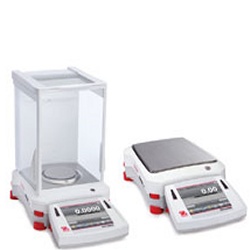We often get questions from prospective customers regarding which scale is suitable for selling cannabis to consumers… Or maybe it’s not so much the selling part… It could be the cultivation process that customers are curious about. Regardless, customers are curious and often uncertain about what rules they need to follow when purchasing digital scales and balances for selling medical marijuana.
Now as we’ve stated before, this industry is challenging sometimes since some states require certain things and other states do not. So, as always, our suggestion is to first contact your state weights and measures or department of agriculture and ask them specifically what is required for your particular state.

One question that a few people have asked over the last few years involves NTEP approved scales with a class III approval. An example of this would be our standard retail price computing scale like you see at your farmers market or your favorite candy shoppe.
In terms of being easy to use, the price computing scale would be a great choice. But the price calculating scale is only a Class 3 device. You are likely to not be very happy with the precision of these scales versus the class 1 or class 2 balances that are mostly recommended for this industry. Below are a few examples of what the state of California recommends for cannabis weighing scales.
DMS recommends that Accuracy Class II (or Accuracy Class I) scales should be used for Medical and Adult-Use Cannabis applications based upon review of the requirements and recommendations in California Code of Regulations (CCR) Title 4, Division 9, § 4000, National Institute of Standards and Technology Handbook (NIST HB 44) paragraphs, including the Scales Code User Requirements (UR) Table 7a.
Impact of Tolerances. Accuracy Class II tolerances are typically 50% or less than Accuracy Class III scale tolerances with loads above 500 scale divisions (e = d). As illustrated in this example, Accuracy Class III scale tolerances can be two to four times larger than Accuracy Class II scale tolerances.
QUESTION: Pat is a Cannabis licensed cultivator who weighs his cannabis and has a scale that can weigh up to 7,000 grams but the average amount typically weighed falls within the 2,000 grams to 6,000-gram range on a scale with a minimum division size of one gram. What should the Accuracy Class of Pat’s scale be, Accuracy Class II or Class III?
ANSWER: An Accuracy Class II scale (aka balance) is the most suitable weighing device for Pat. The Accuracy Class II scale has much tighter accuracy tolerances, meaning that the amount of error allowed throughout the entire range of the scale (from 0 – 7,000 grams) is significantly smaller than an Accuracy Class III scale. Due to the larger tolerances, an Accuracy Class III scale will allow more error and provide less accurate readings, especially at lower weights.
If the cannabis produced by Pat is worth $15/gram and each gram represents one division on the scale, here are the permissible errors and consequential dollar values at various weights:
If Pat weighs 550 grams on his scale, the Accuracy Class II scale will allow only one division error ($15) but the Class III scale allows two division errors ($30).
If Pat weighs 2,500 grams on his scale, the Accuracy Class II scale will still allow only one division error ($15) but the Class III now allow three division errors ($45).
If Pat weighs 5,500 grams on his scale, the Class II scale will still allow only two division errors ($30) but the Class III now allow five division errors ($75).
In summary, Pat could be losing an extra $30 to $75 dollars on each weighment when the quantity of cannabis ranges between 2,000 grams and 5,500 grams! These errors add up to large dollar amounts when a scale is used over a period of time.
Environmental Considerations. Be aware that Accuracy Class II scales are more sensitive to environmental factors such as wind, vibrations, and location since the minimum divisions are smaller than Class III scales of the same capacity (e.g. Class III d = 0.1 g vs. Class II d = 0.001 g). Additional environmental protections may be needed such as wind shields for balances and location away from sources of vibration and temperature changes (e.g., heaters, windows, direct sun, etc.)
We hope this information helps you out. As always if you have an questions or you’re looking to purchase a weighing balance that meets a particular requirement, please contact our customer service department and we will be glad to assist you.